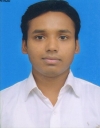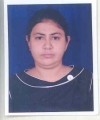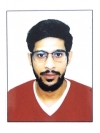Research Statement
My main research interests are in mathematical biology and systems biology. One central aim is to understand when a biological system can be modeled at a deterministic population-based level and when more individual-based stochastic approaches are required. My research uses mathematical models, applying methods from dynamical systems and stochastic processes together with computer simulations. My earlier work was on ecological and epidemiological problems. My Ph.D. thesis was on the problem caused by the diseases spread by migratory birds. I have also studied plankton dynamics with particular emphasis on the Harmful algal bloom (HAB). My post-doctoral research (at Torino University, Italy) concerned the biological control of crops. I tried to find out how effective spiders are as a biological controller in a vineyard.
My work ranges from studying simple dynamics like stability properties to more complex dynamics like chaos. I have studied chaotic dynamics in ecological and eco-epidemiological systems with the help of tools like the Lyapunov exponent and bifurcation diagrams. Now, I am trying to study chaos at the cellular level. My work involves ordinary differential equations (ODE), delay differential equations (DDE), and stochastic differential equations (SDE). There are only a relatively small number of papers where any results are obtained in the case when some of the factors depend on time explicitly. Recently, I have also studied the dynamics of low-dimensional autonomous systems. I also use network analysis using graph theory. I also use clustering algorithms and other statistical tools to analyze high-throughput data. Recently, I have started using machine-learning algorithms to develop diagnostic and prognostic tools.
Current Theme:
The research theme of my lab (Complex analysis group) is to understand the mechanism of a biological phenomenon using mathematical and computational tools. One of our research areas is to capture disease progression's underlying mechanisms and identify potential drug targets. It could then be validated and taken forward by the experimental biologists. Information from big data is derived either by using different available systems biology tools like network analysis, clustering etc., or by developing own tools like bi-clustering algorithm, connecting temporal data, identification of node sensitivity under random perturbations etc. This information captures the hidden mechanism and targets using differential equation-based kinetic models. The models are solved analytically and numerically to obtain sensitive parameters responsible for the system's behaviors. Another area of research involves the identification of molecular signatures associated with a disease and its progression. We use machine-learning (ML) algorithms to develop diagnostic and prognostic models.
Journal editorial board member:
- The Scientific World Journal.
Journal referee
- “Journal of theoretical biology” by Elsevier.
- “Nonlinear Analysis series B: Real world application” by Elsevier.
- “Ecological Complexity” by Elsevier.
- "Mathematical Methods in the Applied Science" by John Wiley and sons.
- “Frontiers of Environmental Science & Engineering in China” by Springer.
- “Ecological Modelling”by Elsevier.
- “International Journal of Biomathematics” by worldscientific.
- “Journal of Biological systems” by worldscientific.
- “Nonlinear studies: The international journal”.
- “Journal of medical plants research” by Academic journals.
- “Bulletin of Calcutta Mathematical Society” by CMS.
- “EURASIP Journal on Bioinformatics and Systems Biology” by springer open journal.
- “Mathematics and computers in simulation” by Elsevier.
- “International Journal of Bifurcation and Chaos” by worldscientific.
- “Nonlinear Analysis: Modelling and Control” by Lithuanian Association of Nonlinear Analysts (LANA).
- "Advances in Difference equations" by Springer.
-
"Ain Shams Engineering Journal" by Elsevier.
Academic Society member:
- American Mathematical Society (Affiliated member).
- Biomathematical society of India (member).
- Indian Science Congress Association (Life member).
Review assignments as faculty
- Associate faculty member in F1000
- Reviewer in ‘Mathematical Reviews’ published by the American Mathematical society, (Reviewer Code: 59077)
2025:
88. Gupta, A., Arora, G., Bairagi, N., and Chatterjee, S. Evaluating the significance of latent tuberculosis infection treatment in high-incidence countries. Mathematical Methods in the Applied Sciences, (vol. 48), pp. 4035-4049 (2025)
2024 (Total 7):
87. Soni, R., Soni, Naina., Paul, A., Tripathi, A., Chatterjee, S., Banerjee, A. Integrated Proteomics and Connectivity Map Analysis Reveal Compounds with Potential Antiviral Effect Against Japanese Encephalitis Virus Infection in Animal Model. The FEBS Journal (Accepted) (2024).
86. Kumar, S., and Chatterjee, S. HistoSPACE: Histology-inspired spatial transcriptome prediction and characterization engine. Methods, (vol. 232), pp. 107–114 (2024). *corresponding author
85. Arora, G., Chatterjee, P., and Chatterjee, S. Exploration of subtype-specific perturbations in breast cancer. Journal of Proteins and Proteomics, (vol. 15), pp. 329-345 (2024). *corresponding author
84. Arora, G., Bairagi, N., and Chatterjee, S. A mathematical model to study low-dose metronomic scheduling for chemotherapy. Mathematical Biosciences, (vol. 372), pp. 109186, (2024).*corresponding author
83. Kumar, S., Sarmah, D. T., Paul, A., and Chatterjee, S. Exploration of functional relations among differentially co-expressed genes identifies regulators in glioblastoma. Computational Biology and Chemistry, (vol. 109), pp. 108024, (2024). *corresponding author
82. Tyagi, S., Sadhu, S., Sharma, T., Paul, A., Pandey, M., Nain, V., Rathore, D., Chatterjee, S., Awasthi, A., Pandey, A. VapC12 ribonuclease toxin modulates host immune response during Mycobacterium tuberculosis infection. Frontiers in immunology, 15:1302163. doi: 10.3389/fimmu.2024.1302163 (2024).
81. Halder S., Ghosh S., Das, P., Bairagi, N., and Chatterjee, S.Studying the role of random translocation of GLUT4 in cardiomyocytes on calcium oscillations. Applied Mathematical Modelling, (vol. 125) pp. 599-616, (2024).*corresponding author
2023 (Total 10):
80. Arora, G., Banerjee, M., Langthasa, J., Bhat, R., and Chatterjee, S. Targeting metabolic fluxes reverts metastatic transitions in ovarian cancer. iScience. (2023).*corresponding author
79. Sarmah, D. T., Paul, A., Kumar, S., Bairagi, N., and Chatterjee, S.A data-driven multilayer approach for the identification of potential therapeutic targets in non-alcoholic steatohepatitis. Physica A: Statistical Mechanics and its Applications, (Accepted). (2023).*corresponding author
78. Paul, A., Kundu, J., Chatterjee, S., A minimal mathematical model to study insulin synthesis and secretion process. Applied Mathematical Modelling, (vol. 122) pp. 456-476, (2023). *corresponding author
77. Sarmah, D. T., Paul, A., Berry, U., Surjit, M., Bairagi, N., and Chatterjee, S. BAG6 is a novel player in controlling nonalcoholic steatohepatitis: result from a comprehensive in-silico study. BioRxiv, 2023-05. (2023).*corresponding author
76. Arora, G., Langthasa, J., Banerjee, M., Bhat, R., and Chatterjee, S. Targeting metabolic fluxes reverts metastatic transitions in ovarian cancer. BioRxiv,2023-05. (2023).*corresponding author
75. Sarmah, D T., Gujjar, S., Mathapati, S., Bairagi, N., Chatterjee, S., Identification of critical autophagy-related proteins in diabetic retinopathy: A multi-dimensional computational study. Gene, (accepted). (2023).*corresponding author
74. Gupta, S., Kumawat, S., Fatima, Z., Priya., Chatterjee, S., Quantitative analysis of the bioenergetics of Mycobacterium tuberculosis along with Glyoxylate cycle as a drug target under inhibition of enzymes using Petri net. Computational Biology and Chemistry, (online), 107828, (2023).
73. Sarmah, D T., Parveen, R., Kundu, J., Chatterjee, S., Latent tuberculosis and computational biology: A less-talked affair. Progress in Biophysics and molecular biology, (Vol. 178), pp. 17-31, (2023) *corresponding author
72. Halder S., Chatterjee, S., Bistability regulates TNFR2-mediated survival and death of T-regulatory cells. Journal of Biological Physics, (Vol. 49), 95–119, (2023). *corresponding author
71. Kumar, S., Sarmah, D T., Asthana, S., Chatterjee, S., konnect2prot: A web application to explore the protein properties in a functional protein-protein interaction network. Bioinformatics, 39(1), btac815, (2023). *corresponding author
2022 (Total 4):
70. Halder, S., Ghosh S., Chattopadhyay, J., Chatterjee, S., Understanding noise in cell signalling in the prospect of drug-targets. Journal of Theoretical Biology, 555, 111298, (2022). *corresponding author
69. Kumar, P., Soory, A., Mustfa, S, A., Sarmah, D, T.,Chatterjee, S., Bossis, G., Ratnaparkhi, G, S., and Srikanth, C, V., Bidirectional regulation between AP-1 and SUMO genes modulates inflammatory signalling during Salmonella Typhimurium infection. Journal of Cell Science 135 (16): jcs260096, (2022).
68. Paul, A., Das, P, N., Chatterjee, S., A minimal model of glucose-stimulated insulin secretion process explores factors responsible for the development of type 2 diabetes. Applied Mathematical Modelling, (Vol. 108), pp. 408-426, (2022). *corresponding author
67. Paul, A., Azhar, S., Das, P, N., Bairagi, N., Chatterjee, S., Elucidating the metabolic characteristics of pancreatic β-cells from patients with type 2 diabetes (T2D) using a genome-scale metabolic modeling. Computers in Biology and Medicine. (vol. 144) 105365, (2022). *corresponding author
2021 (Total 7):
66. Paul, A., Kadnur, H B., Ray, A, Chatterjee, S., Wig, N., Seroprevalence and attainment of herd immunity against SARS CoVâ€2: A modelling study. J Family Medicine and Primary Care (vol. 10 (11)), 4030-4035, (2021).
65. Halder S., Ghosh S., Chattopadhyay, J., Chatterjee, S., Bistability in cell signalling and its significance in identifying potential drug targets. Bioinformatics, (vol. 37(22)), pp. 4146-416, (2021). *corresponding author
64. Sarmah, D T., Bairagi, N., Chatterjee, S., The interplay between DNA damage and autophagy in lung cancer: A mathematical study. Biosystems (Vol. 206), 10443, (2021). *corresponding author
63. Arora G., Ghosh S., Chatterjee S. Understanding doxorubicin as1. Halder S., Ghosh S., Chattopadhyay, J., Chatterjee, S., Understanding noise in cell signalling in the prospect of drug-targets. Journal of Theoretical Biology (Accepted). *corresponding authorsociated calcium remodeling during triplenegative breast cancer treatment: an in silico study. Explor Target Antitumor Ther; 2: 208- 26. https://doi.org/10.37349/etat.2021.00042 (2021). *corresponding author
62. Paul A., Kadnur, H B., Ray, A., Chatterjee, S., Wig, N., Seroprevalence and attainment of herd immunity against SARS CoV-2: A modelling study. medRxiv. (2021).
61. Gupta A., Kumar, A., Anand, R., Bairagi, N., Chatterjee, S., Genome scale metabolic model driven strategy to delineate host response to Mycobacterium tuberculosis infection. Molecular Omics (Vol. 17), pp. 296-306, (2021). *corresponding author
60. Sarmah, D T., Bairagi, N., and Chatterjee, S., Tracing the footsteps of autophagy in computational biology. Briefings in Bioinformatics, 22(4), bbaa286, (2021). *corresponding author
59. Paul A., Anand, R., Karmakar, S., Rawat, S., Bairagi, N., Chatterjee S., Exploring gene knockout strategies to identify potential drug targets using genome-scale metabolic models. Scientific Reports. 11:213 (2021). *corresponding author
2020 (Total 5):
58. Paul A., Chatterjee S., Bairagi N., COVID-19 Transmission Dynamics During the Unlock Phase and Significance of Testing. J Vaccines Vaccin. S6: 001. (2020).
57. Das, K., Srinivas, M. N., Chatterjee, S., Spatiotemporal analysis of a prey predator model with trophic interaction with harvesting. American J Math and Sci., Vol. 9, (2020).
56. Das, P. N., Kumar, A.,Bairagi, N., and Chatterjee, S., Effect of delay in transportation of extracellular glucose into cardiomyocytes under diabetic condition: A study through mathematical model. Journal of Biological Physics (Vol. 46), pp. 253-281 (2020). *corresponding author
55. Paul, A., Chatterjee, S., & Bairagi, N. Prediction on Covid-19 epidemic for different countries: Focusing on South Asia under various precautionary measures. medRxiv. (2020). *co-corresponding author
54. Das, P. N., Halder, S., Bairagi, N., and Chatterjee, S., Delay in ATP-dependent calcium inflow may affect insulin secretion from pancreatic beta-cell. Applied Mathematical Modelling (Vol. 84), pp.202-221, (2020). *corresponding author
2019 (Total 1):
53. Gupta A., Das, P. N., Bouzeyen, R., Karmakar, S, P., Singh, R., Chatterjee, S., Restoration of cytosolic calcium inhibits Mycobacterium tuberculosis intracellular growth: Theoretical evidence and experimental observation. Journal of Theoretical Biology (Vol. 472), pp.110-123, (2019). *corresponding author
2018 (Total 2):
52. Halder, S., Chatterjee, S., & Bairagi, N. Unravelling the Sensitivity of Two Motif Structures Under Random Perturbation. In Trends in Biomathematics: Modeling, Optimization and Computational Problems. Springer, Cham. pp. 245-263, (2018) *corresponding author
51. Anand, R., Sarmah, D T., Chatterjee, S., Extracting proteins involved in disease progression using temporally connected networks. BMC systems Biology (12:78) (2018) DOI 10.1186/s12918-018-0600-z. *corresponding author
2017 (Total 6):
50. Das, P., Kumar, A., Bairagi, N., and Chatterjee, S., Restoring calcium homeostasis in diabetic cardiomyocytes: An investigation through mathematical modeling. Molecular Biosystems (vol. 13), pp. 2056-2068, (2017).*corresponding author
49. Gupta, N., Duggal, S., Jailkhani, N., Chatterjee, S., Rao, K. V., & Kumar, A. Dataset to delineate changes in association between Akt1 and its interacting partners as a function of active state of Akt1 protein. Data in Brief (vol. 13), pp.187. (2017).
48. Das, P. N., Mehrotra, P., Mishra, A., Bairagi, N., Chatterjee, S., Calcium dynamics in cardiac excitatory and non-excitatory cells and the role of gap junction. Mathematical Biosciences, (vol. 289), pp. 51-68, (2017).*corresponding author
47. Anand, R., Chatterjee, S., Tracking disease progression by searching paths in a temporal network of biological processes. Plos One (12(4)): e0176172, doi.org/10.1371/journal.pone.0176172(2017). *corresponding author
46. Anand, R., Chatterjee, S., Extracting genes involved in disease from a connected network of perturbed biological processes. Journal of Computational Biology (Vol. 24(5)), pp. 460-469,, (2017). *corresponding author
45. Mehrotra, P., Rao, K., Chatterjee, S., A mathematical model predicting host mitochondrial pyruvate transporter activity to be critical regulator ofMycobacterium tuberculosis pathogenicity. Biosystems (vol. 155), pp. 1-9, (2017).*corresponding author
2016 (Total 4):
44. Anand, R., Ravichandran, S., Chatterjee, S., A new method of finding groups of coexpressed genes and condition of coexpression. BMC Bioinformatics (17:486) (2016). DOI 10.1186/s12859-016-1356-3. *corresponding author
43. Das, P. N.,Pedruzzi, G., Bairagi, N., Chatterjee, S., Coupling calcium dynamics and mitochondrial bioenergetic: an in silico study to simulate cardiomyocyte dysfunction. Molecular Biosystems (vol. 12), pp. 806-817, (2016).*corresponding author
42. Pedruzzi, G., Das, P. N., Rao, K., Chatterjee, S., Understanding PGE2, LXA4 and LTB4 balance during Mycobacterium tuberculosis infection through mathematical model. Journal of Theoretical Biology (Vol. 389), pp.159-170, (2016). *corresponding author
41. Chatterjee, S., Pessani, D., Venturino, E., Harvesting strategies for ``bianchetti" and ``blue fish" in the Ligurian Sea (North Mediterranean). Appl. Math. Inf. Sci., 10, No. 3,pp.1-14, (2016).
2015(Total 3):
40. Singh, V., Kaur, C., Chaudhary, VK., Rao, K., Chatterjee, S., M. tuberculosisSecretory Protein ESAT-6 Induces Metabolic Flux Perturbations to Drive Foamy Macrophage Differentiation. Scientific Reports. 5, 12906; doi: 10.1038/ srep12906 (2015). *corresponding author
39. Pedruzzi, G., Rao, K., Chatterjee, S., Mathematical model of mycobacterium-host interaction describes physiology of persistence. Journal of Theoretical Biology (Vol. 376), pp.105-117, (2015). *corresponding author
38. Biswas, S., Chatterjee, S., Chattopadhyay, J., Cannibalism may control disease in predator population: Result drawn from a model based study. Mathematical methods in the Applied Sciences(Vol 38), pp. 2272-2290 (2015).
2014 (Total 2):
37. Sinha, N., Negi, S., Tikoo, K., Sharma, S., Tripathi, P., Kumar, D., Rao, K V S., Chatterjee, S., Molecular signatures for obesity and associated disorders identified through partial least square regression models.BMC System Biology (2014). 8:104. *corresponding author
36. Mehrotra, P., Jamwal, S., Saquib, N, Md., Sinha, N., Siddiqui, Z., Manivel, V., Chatterjee, S., and Rao, K, V S., Pathogenicity of Mycobacterium tuberculosis is expressed by regulating metabolic thresholds of the host macrophage. PLOS Pathogens.(2014). 10 (7): e1004265. doi:10.1371/journal.ppat.1004265
2013: (Total 3)
35. Bhattacharya, S., Chatterjee, S., Biswas, B., Roy, P., Guerekata, G., Chattopadhyay, J., A handling tool to estimate upper bounds of environmental fluctuations.Applicable analysis. (2013) DOI: 10.1080/00036811.2013.851786.
34. Kapil, C., Hussain, T., Jairajpuri, M, A., Yogavel, M., Chatterjee, S., Sharma, A., Systematic analysis of proteomes with emphasis oninsertions in malaria parasite Plasmodium falciparum. Protein & Peptide Letters(Vol. 20), pp.1088-1097, (2013).
33. Chattopadhyay, J., Chatterjee, S., Venturino, E. Aggregation of toxin producing phytoplankton acts as a defense mechanism- a model based study.Mathematical and Computer Modelling of Dynamical System(Vol. 19), pp.159-174, (2013). *corresponding author
2012: (Total 3)
32. Midha, Mukul., Tikoo, K., Sinha, N., Negi, S., Verma, H N., Rao, K V S., Chatterjee, S., Manivel, V., Extracting time dependent obese-diabetic specific networks in hepatic proteome analysis.Journal of Proteome Research (Vol. 11), pp. 6030-6043, (2012). *co-corresponding author
31. Chatterjee, S.,Coupling effect of grazing pressure and nutrient enrichment on system stability. Mathematical Biosciences (Vol. 238), pp.1-11, (2012). *single author
30. Chatterjee, S., Kesh, D., Bairagi, N., How population dynamics change in presence of migratory prey and predator's preference?Ecological Complexity, (Vol. 11),pp- 53-66(2012).
2011: (Total 4)
29. Chatterjee, S., Kumar, D.,Unraveling the Design Principle for Motif Organization in Signaling Networks. PLos One 6(12): e28606. Doi: 10.1371/ journal. pone. 0028606 (2011).
28. Bhattacharya, S., Chatterjee, S., Chattopadhyay, J., Basu, A., On stochastic differential equations and equilibrium distribution: A conditional moment approach. Environmental and Ecological Statistics (vol. 18 (4)), pp. 687-708, (2011).
27. Chatterjee, A., Pal, S., Chatterjee, S., Bottom-up and top-down effect on toxin producing phytoplankton and its consequence on the formation of the plankton bloom. Appl. Math. Comp. (Vol. 218), pp.3387-3398, (2011).
26. Chatterjee, S., Venturino, E., On predation of symbiotic systems. AIP Conf. Proc., (Vol. 1389), pp. 1240-1243, (2011).
2010: (Total 3)
25. Md. Sarwar Jamal, M, S., Ravichandran, S., Chatterjee, S., Dua, R., Rao, K. V. S., Defining the antigen receptor-dependent regulatory network that induces arrest of cycling immature B-lymphocytes. BMC System Biology, 4:169, (2010).
24. Chatterjee, S., Alternative food source coupled with prey recovery enhance stability between migratory prey and their predator in the presence of disease. Nonlinear Analysis B: Real world application,(Vol. 11(5)), pp. 4415-4430, (2010). *single author
23. Das, K.,Chatterjee, S., Chattopadhyay, J., Occurrence of chaos and its possible control in a predator-prey model with density dependent disease-induced mortality on predator population. Journal of Biological Systems, (Vol. 18(2)), pp.399-435,(2010).
2009: (Total 7)
22. Chatterjee, S., Venturino, E. Shark-Fish interplay at different life stages. Aplimat- Journal of Applied Mathematics (Vol. 2(2)), pp. 177-188, (2009). (Accepted in the APLIMAT proceeding also-- Chatterjee, S., Venturino, E. Shark-Fish interplay at different life stages. Aplimat- 8th- International conference on Applied Mathematics, APLIMAT- 2009, Slovak University of Technology in Bratislava, pp. 567-576).
21. Chatterjee, S., Isaia, M., Venturino, E. Effects of spiders' predational delays in intensive agroecosystems. Nonlinear Analysis: Real world application (Vol. 10), pp. 3045-3058, (2009).
20. Chatterjee, S., Isaia, M., Venturino, E. Spiders as a biological controllers in the Langa Astigiana vineyards. Journal of Theoretical Biology,(Vol. 258), pp. 352-362, (2009). *corresponding author
19. Chatterjee, S., Venturino, E., Chakraborty, S., Chattopadhyay, J., A simple mathematical model for seasonal planktonic blooms. Mathematical Methods in the Applied Sciences, (Vol. 32), pp.1738-1750,(2009).
18. Pal, S.,Chatterjee, S., Das, K., Chattopadhyay, J., Role of competition in phytoplankton population for the occurrence and control of plankton bloom in the presence of environmental fluctuations. Ecological Modelling (Vol. 220), pp. 96-110, (2009).
17. Das, K.,Chatterjee, S., Chattopadhyay, J., Disease in prey population and body size of intermediate predator reduce the prevalence of chaos- conclusion drawn from Hastings-Powell model. Ecological Complexity,(Vol. 6), pp. 363-374, (2009).
16. Chatterjee, S., Kundu, K., Pal, S., Chattopadhyay, J., Venturino, E. Comparing two new ecoepidemic models of the Salton Sea. MATHMOD 2009, the 6th Vienna International Conference on Mathematical Modelling, Vienna, Austria, February 11th – 13th, 2009.
2008: (Total 8)
15. Venturino, E.,Isaia, M., Bona, F., Chatterjee, S., Badino, G. Biological controls of intensive agro-ecosystems: wanderer spiders in the Langa Astigiana. Ecological Complexity, (Vol. 5(2)),pp157-164, (2008).
14. Chatterjee, S., Pal, S.,Chattopadhyay, J. Role of migratory birds under environmental fluctuation- A mathematical study. Journal of Biological Systems, (Vol. 16 (1)), pp. 81-106, (2008). *corresponding author
13. Chattopadhyay, J., Chatterjee, S., Venturino, E. Patchy agglomeration as a transition from monospecies to recurrent plankton blooms. Journal of Theoretical Biology,(Vol. 253), pp. 289-295, (2008).
12. Bandyopadhyay, M., Chatterjee, S., Chakraborty, S., Chattopadhyay, J., Density dependent predator death prevalence chaos in a tri-trophic food chain model. Nonlinear Analysis: Modelling and Control, (Vol. 13), pp. 305-324, (2008).
11. Chatterjee, S., Isaia, M., Bona, F., Badino, G., Venturino, E. Modelling environmental influences on wanderer spiders in the Langhe region (Piemonte-NW Italy). Journal of Numerical Analysis, Industrial and Applied Mathematics (Vol. 3), pp. 193-209, (2008).
10. Bairagi, N., Chatterjee, S., Chattopadhyay, J. Variability in the secretion of CRH, ACTH & Cortisol and understandability of the HPA axis dynamics- a mathematical study based on clinical evidences. Mathematical Medicine and Biology: A journal of IMA, (Vol. 25), pp. 37-63, (2008).
9. Das, K.,Chatterjee, S., Chattopadhyay, J., Dynamics of nutrient-phytoplankton interaction in the presence of viral infection and periodic nutrient input. Math. Model. Nat. Phenom.(Vol. 3 (3)), pp. 149-169,(2008).
8. Chatterjee, S., Venturino, E. The paradox of enrichment in ratio--dependent ecoepidemic models. NUMERICAL ANALYSIS AND APPLIED MATHEMATICS: International Conference on Numerical Analysis and Applied Mathematics 2008, Kos, Greece; AIP Conf. Proc., Vol. 1048(1), pp. 974-977 (2008).
2007: (Total 5)
7. Chakraborty, S., Chatterjee, S., Venturino, E., Chattopadhyay, J. Recurring plankton bloom dynamics modeled via toxin producing phytoplankton. Journal of Biological Physics, (Vol. 33(4)), pp. 271-290, (2007).
6. Chatterjee, S. and Chattopadhyay, J. Role of migratory bird population in a simple eco-epidemiological model. Mathematical and Computer Modelling of Dynamical System. (Vol. 13 (1)), pp. 99-114, (2007).
5. Chatterjee, S., Das, K., Chattopadhyay, J. Time delay factor can be used as a key factor for preventing the outbreak of a disease- results drawn from a mathematical study of a one season eco-epidemiological model. Nonlinear Analysis: Real World application (Vol. 8 (5)), pp. 1472-1493, (2007).
4. Pal, S.,Chatterjee, S., Chattopadhyay, J. Role of toxin and nutrient for the occurrence and termination of plankton bloom - Results drawn from field observations and a mathematical model. Biosystems. (Vol. 90(1)), pp. 87-100, (2007).
3. Chatterjee, S., Kundu, K.,Chattopadhyay, J. Role of horizontal incidence in the occurrence and control of chaos in an eco-epidemiological system. Mathematical Medicine and Biology: A Journal of IMA. (Vol. 24(3)), pp. 301-326, (2007).
2006: (Total 2)
2. Chatterjee, S., Ghosh, A, K., Chattopadhyay, J. Controlling disease in migratory bird population- A probable solution through mathematical study. Dynamical system: An International Journal. (Vol. 21 (3)), pp. 265-288, (2006).
1. Chatterjee, S., Bandyopadhyay,M. Chattopadhyay, J. Proper predation makes the system disease free - Conclusion drawn from an eco-epidemiological model. Journal of Biological Systems. (Vol. 14(4)), pp. 599-616, (2006).
7. Sarmah, D T., Kumar, S., Chatterjee, S., Bairagi, N., Dissecting big RNA-Seq cancer data using machine learning to find disease-associated genes and the causal mechanism. Big Data Analytics in Chemoinformatics and Bioinformatics, Ed: S. C. Basak, R. Sujatha, M. Vracko, published Elsevier (2022).
6. Kumar, D., Chatterjee, S., Mathematics and Biology: The Growing Synergy. Math Unlimited: Essays in Mathematics, Ed: H.N. Ramaswamy, R. Sujatha, C.S. Yogananda, published by Science publishers, Taylor and Francis group (2012). *corresponding author
5. Jailkhani, N., Chatterjee, S., Rao, K., Systems Biology: Evolution of a new discipline. Science and culture. (Vol. 78), pp. 100-105, (2012).
4. Caccherano,E., Chatterjee S., Giani, L C., Grande, L., Romano, T., Visconti, G., Venturino, E., Models of symbiotic associations in food chains. published by NOVA Science publishers, (In press).
3. Roy, P.K., Mondol, J., Chatterjee, S., Vertical incidence increases virulence in pathogens: A model based study. Electrical Engineering and Applied Computing. Lecture Notes in Electrical Engineering. (Vol. 90), pp. 661-673, (2011).
2. Chatterjee, S., Migratory birds and spread of disease- A mathematical model based study, VDM-Verlag (Germany). (ISBN-13:978-3639268256). [full book].
1. Bairagi, N., Pal, S., Chatterjee, S., Chattopadhyay, J. A qualitative study on nutrient, non-toxic phytoplankton, toxic phytoplankton and zooplankton interaction in open marine system. Aspects of Mathematical Biology, Birkhauser, eds, Hosking, R, J., and Venturino, E., Mathematics and Biosciences in Interaction, pp. 41-68, (2008).
1. Indian Copyright Diary No.: 52951/2014-CO/SW
Title:Computer Software for Drug Targeting
Authors:Dr. Samrat Chatterjee, Dr. Rajat Anand
IPR Protection Status:Copyright protection opted [Software Category]
Advantageous Feature(s):Algorithm uses less number of parameters than existing software
Application(s):Software can be used to extract drug targets from biological/Clinical data based on protein-protein interaction
Subscription:THSTI
2. Indian Copyright Diary No.: 5662/2017CO/SW
Title:An Artificial Intelligence Algorithm for Predicting Susceptibility to Type 2 Diabetes
Authors:Dr. Samrat Chatterjee, Rajat Anand, Dr. Kanury V.S. Rao, Dr. Ravi Chandra Beeram
IPR Protection Status:Copyright protection opted[Software Category]
Advantageous Feature(s):Predict their future diabetic state with high accuracy
Application(s):Predict susceptibility to Type 2 Diabetes
Subscription: THSTI
3. Indian Copyright Dairy No.: 14303/2020-CO/SW
Title:konnect2prot
Authors:Dr. Samrat Chatterjee, Dr. Shailendra Asthana, Mr. Dipanka Tanu Sarmah, Mr. Shivam Kumar, Mr. Ekant Sharma, Ms. Komal Sharma, Mr. Krishan
IPR Protection Status:Copyright protection opted [Computer Software ]
Advantageous Feature(s):Konnet2prot provides protein-protein interaction (PPI) related at most information at one platform
Application(s):Web-server can be used to extract protein-protein interaction related information
Completed:
1. Mathematical approaches to understand host- 
pathogen cross-talk in Mycobacterial pathogenesis. (Granted by SERB, DST for 3 years). (Principal Investigator)-- Completed in 2018.
2. Using genome scale metabolic models to identify novel host mediated therapies against Mycobacterium tuberculosis (Granted by THSTI intramural project With Dr. Ramandeep Singh, THSTI, for 1 year).(Co-Principal Investigator) )-- Completed in 2018.
3. Unravelling the architecture of biological networks to identify points of sensitivity under perturbation. (Granted by DBT, with Prof. Joydev Chattopadhyay Indian Statistical Institute, Kolkata as PI). (Project coordinator and PI)-- July, 2016—January, 2020.
4. Use of model trajectories to understand the regulatory mechanisms underlying metabolic diseases. (Granted by CSIR). (Principal investigator)-- August, 2016—January 2020.
5. Improving the resolution of protein-protein interaction (PPI) network. (Granted by DBT). (Principal investigator)-- Dec, 2017—Dec, 2021.
6. A study to evaluate the association between air pollution and adverse pregnancy outcomes in a semi-urban district of North India.(Granted by THSTI intramural project With Dr. Ramachandran T., THSTI).(Co-Principal Investigator)—September, 2018—August, 2019.
7. Effect of time lag and stochastic perturbation on the calcium oscillation in cardiomyocyte: Study based on Mathematical model. (Granted by MATRICS SERB, DST for 3 years). (Principal Investigator)—February, 2019—June, 2022.
8. Understanding metabolic perturbation in cancer using mathematical models. (Granted by SERB, DST for 3 years) (Principal Investigator)—December, 2019—December, 2022.
Ongoing:
9. To study host cell regulation under influence of Mycobacterium tuberculosis using mathematical models. (Granted by DBT for 2 years) (total fund= Rs. 24,95,460). (Principal Investigator)—August, 2020—July, 2023.
10. Investigating the effectiveness of autophagy as a potential target and a
molecular signature of slow progressive diseases (Granted by THSTI intramural project) (total fund= Rs. 20,00,000). (Principal Investigator)—August, 2021—August, 2023.
- Gold Medal in M. Sc– 2003
- NBHM Research award (for PhD research)– 2003
- Selected as young Indian researcher under MIUR project of Italian Government– 2006, 2007.
- Autobiography is published in 2010 Edition of Who's Who in the World.
- Selected by INSA under International Collaboration/ Exchange programme- 2019 between INSA-PAS to visit Warsaw University.
CONFERENCES/ WORKSHOP (After joining THSTI):
Invited talk within India
32. Emerging Trends in Translational Bioinformatics (ET2B)- 2024 (Organized by Birla Institute of Technology, Mesra, Ranchion 5th -7th December, 2024). Invited talk “Significance of bistability in cellular function and disease establishment”.
31. National Conference on
Mathematical Modeling, Analysis & Computation NCMMAC-2023
 (Organized by Department of Mathematics, Sriperumbudur 602105, Tamil Nadu on 6th -7th June, 2023). Invited talk “Mathematical models andMycobacterium tuberculosis.”
30. Lecture series in nonlinear dynamics (Lecture 94). (Organized by Department of Nonlinear Dynamics, Bharathidasan University, Tiruchirappalli on 5th May, 2023). Invited talk“Understanding Type 2 diabetes biology through Mathematical modelling and Network analysis”.
29. A guest lecture series on mathematics behind sciences. (Held at Amity University, Gurgaon on 17th April, 2023). Invited talk“Mathematical modelling and Network analysis to understand the disease dynamic”.
28. National Conference on Mathematics: Various Aspects in Society (NCMVAS-2023) (Held at Jadavpur University, Kolkata on 13th-14th March- 2023). Invited talk“Studying diabetes through data analysis and mathematical model”.
27. 8th Indo-US workshop on mathematical chemistry (IWMC) 2022 (13th - 17th September 2022). Invited talk“Identification of possible drug target through big data analysis”.
26. Mathematical Modelling of Biosystems with special focus on epidemiology (Organized by Mizoram University, 22nd-26th August 2022). Invited talk“Mathematical modeling and big data analysis”.
25. AICTE- ISTE Sponsored 6 days online Refresher/ Induction Program on “Leveraging Academic Researchers on Developing Diagnostic Kits, Vaccines and Drug Product for Improved Therapy Management against Deadly Viruses: Lesson Learnt from COVID-19” (Organized by Tatyasaheb Kore College of Pharmacy, 13th-18th December 2021). Invited talk “Web-based application for the identification of triggers”.
24. 27th International Conference on Interdisciplinary research in Biomedical Sciences. (Organized by Amity Institute of Molecular Medicine and Stem Cell Research, 26th-28th October, 2021). Invited talk “Understanding cell signaling using mathematical modeling to develop tools that capture potential drug targets”.
23. Mathematical Biology Seminar Series (Organized by School of Arts and Sciences, Ahmedabad University, 14th July). Invited talk “Exploring significance of bistability in cell signaling through mathematical models”.
22. Two-day National Level Webinar on Mathematics and It’s Recent Trends (Organized by the Department of Mathematics in collaboration with IQAC, Maulana Azad College and Biomathematical Society of India, 28th-29th Sep 2020) Invited talk“Understanding the role of calcium dynamics in different disease condition through mathematical models”.
21. International Web Conference on Advance Research in Science, Humanities and Social Science (IWCARSHSS 2020). (Organized by Department of Mathematics, Maharaja Bir Bikram University, 9th-10th July, 2020). Invited talk “Bistability in cell signaling and network motifs”.
20. A one-day webinar on Mathematical and Statistical modeling of infectious diseases relevant to COVID-19 (Organized by Department of Mathematics, Assam University, Silchar on 8th July, 2020). Invited talk “COVID-19 transmission dynamics during unlocking phase”.
19. International conference of Mathematical Sciences and applications (ICMSA 2020). (Held at University of Kalyani, Kalyani on 26th -28th Feb- 2020). Keynote talk“Studying Input-Output relation in signaling networks under random perturbation”.
18. Faculty presentation in Mathematics department, Amity University, Gurgaon (Held at Amity University, Gurgaon on 8th November, 2019). Invited talk“Mathematical tools used to understand disease dynamics and drug target discovery”.
17. India biodiversity meet-2019 (IBM 2019) Held at Indian Statistical Institute, Kolkata on 14th -16th Feb- 2019) Invited talk “Revealing the significance of calcium dynamics in normal cardiac functioning using mathematical models”.
16. Faculty presentation in IMSc, Chennai (held in IMSc, Chennai on 1st- 4th January-2019) Invited talk “Revealing the significance of calcium dynamics in normal cardiac functioning using mathematical models”.
15. 106 Indian Science Congress (ISC) (Held at Lovely Professional University, Jalandhar, Punjab on 5th-7th January-2019) Special invitee in the symposium entitled "Mathematical and Computational Modelling with Application to Biology and Medicine" under Mathematical Sciences (including Statistics) Section.Invited talk “Studying host-pathogen interaction under the influence of Mycobacterium tuberculosis through mathematical models”.
14. National Conference on Mathematical and Theoretical Biology (NCMTB 2018) (Held at Jadavpur University, Kolkata on 22nd-23rd March- 2017) Invited talk “Studying host-pathogen interaction under the influence of Mycobacterium tuberculosis through mathematical models”.
13. 8th Workshop on Bioinformatics and Molecular Modeling in Drug Design (Held at ACBR, Delhi University, New Delhi, on 15th-17th March, 2018) Invited talk “Studying host-pathogen interaction under the influence of Mycobacterium tuberculosis through mathematical models”.
12. CDAC Symposium on Accelerating Biology 2018: Digitizing life (Held at IISER, Pune, 9th-11th January, 2018) Invited talk “Algorithms analyzing temporal omics data to track disease progression”.
11. Invited presentation in SPARC (Sunpharma research) (Held at SPARC office, Vadodra, 12th September, 2017) Invited talk “Mathematical and computational biology for drug target discovery and disease pre-diagnosis”.
10. National symposium on Multidrug Resistant Tuberculosis: Challenges & Strategies (Held at Amity University, Gurgaon on 20th April- 2017) Invited talk “Regulation of host metabolic network by Mycobacterium tuberculosis”.
9. National Conference on Mathematical and Theoretical Biology (NCMTB 2017) (Held at Jadavpur University, Kolkata on 16th-17th March- 2017) Invited talk “Unravelling the architecture of biological networks to identify points of sensitivity under perturbation”.
8. India biodiversity meet-2016 (IBM 2016) (Held at Indian Statistical Institute, Kolkata andEngineering college Berhampore on 24th – 27th October- 2016) Invited talk “Environment: A decisive player in driving host-pathogen interaction”.
7. Workshop on statistical and mathematical modeling using Matlab (Held at G D Goenka University, Gurgaon on 7th September- 2016) Invited to conduct a whole one-day workshop including hands on training in Matlab.
6. Regular technical seminar at CCB (Held at IIIT, New Delhi on 30th August- 2016) Invited talk “To understand host-pathogen cross-talk in mycobacterial pathogenesis”.
5. Faculty workshop on ‘systems biology- Fundamental and advances’ (Held at Nirma University,Ahmedabad on 16th December- 2015) Invited talk “Connecting high-throughput dynamical networks with small scale mathematical models to understand disease mechanism”.
4. National Conference on Mathematical and Theoretical Biology (NCMTB 2015) (Held at Jadavpur University, Kolkata on 19th-20th November- 2015) Invited talk “To understand host-pathogen cross-talk in mycobacterial pathogenesis-II”.
3. One day symposium on mathematical computational biology (Held at Sri Venkateswara college (University of Delhi), New Delhi on 10th March, 2015) Invited talk “Studying host-pathogen cross-talk in mycobacterial pathogenesis: examples from the field of mathematical biology”.
2. India biodiversity meet-2014 (IBM 2014) (Held at Indian Statistical Institute, Kolkata on 21st- 23rd November- 2014). Invited talk “To understand host-pathogen cross-talk in mycobacterial pathogenesis”.
1. International Conference on Dynamical Systems and Mathematical Biology (ICDSMB 2014) (Held at Jadavpur University, Kolkata on 17th-19th November- 2014). Invited talk “Change in Host micro-environment in the presence Mycobacterium tuberculosis”.
Talk outside India
3. The 8thCIJK International Conference on Mathematical and Theoretical Biology (Held at Sono Belle Jeju, Jeju Island, Republic of Korea, June 27 - July 1, 2023). Invited talk “Existence of bistability in cell signalling and occurrence of disease”.
2. Computational biology and bioinformatics (BOB) seminar (Held at University of Warsaw, Poland, on September 9th, 2019). Presented a paper entitles “Identification of sensitive nodes in signaling networks under random perturbation”.
1. The conference BIOMAT 2017 - International Symposium on Mathematical and Computational Biology (Held at the Institute of Numerical Mathematics, Russian Academy of Sciences, Moscow, Russia, 29th October – 4th November, 2017). Presented a paper entitles “Unravelling the sensitivity of two motif structures under random perturbation”.

MS. GARHIMA ARORA
PH.D STUDENT

MR. SHIVAM KUMAR
PH.D STUDENT

MS. DEEPIKA KUMARI
TECHNICAL OFFICER-I

MR. JAYENDRAJYOTI KUNDU
PH.D STUDENT

MR. DEVVRAT PANDEY
PH.D STUDENT

MS. POULOMI CHATTERJEE
PH.D STUDENT

MR. AMAN
PH.D STUDENT

MR. ABHINAV AGARWAL
PH.D STUDENT
PhD student (Awarded):
1. Dr. Abhijit Paul: PhD degree awarded from Jadavpur University-2023 (Jadavpur University).
2. Dr. Suvankar Halder: PhD degree awarded from Jadavpur University-2023 (Jadavpur University).
External PhD student (Awarded):
1. Dr. Phonindra Nath Das: PhD degree awarded from Jadavpur University-2018 (Joint Supervision with Prof. Nandadulal Bairagi, Jadavpur University).
2. Dr. Ankur Gupta: PhD degree awarded from Jadavpur University-2022 (Joint Supervision with Prof. Nandadulal Bairagi, Jadavpur University).
3. Dr. Priya: PhD degree awarded from Amity University-2024 ((Joint Supervision with Dr. Sunita Kumawat, Amity University)
Summer trainee:
e. Ms. Vanshika Jain: Summer trainee, from Amity University, UP (March-May, 2021).
d. Ms. Shruti Rathore: Summer trainee, from Amity University, UP (March-May, 2021).
c. Mr. Shivam Gupta: Summer trainee, from Amity International University, UP (June-July, 2016).
b. Mr. Supriya Mohan: Summer trainee, from Central University of Bihar (May-July, 2014).
a. Mr. Rohit kr. Verma: Summer trainee, from Central University of Bihar (May-July, 2014).
Past students:
14. Mr. Dipanka Tanu Sarmah: JRF, SRF, Senior project associate (May, 2015- May 2023)
13. Dr. Sumana Ghosh: Post doc fellow (April, 2018- December, 2021)
12. Mr. Ekant Sharma: JRF (From September, 2019- June, 2021).
11. Ms. Ruby Parveen: JRF (from January 2021- October 2021).
10. Dr. Suman Saha: Senior project associate (May, 2020- May 2021)
9. Ms. Komal Sharma: JRF (February, 2019- January, 2021).
8. Dr. Anuradha Yadav- Post doc fellow (August, 2018- August 2019).
7. Dr. Rajat Anand- Post doc fellow (October, 2013- Dec, 2018).
6. Ms. Pooja: JRF (November, 2016- May, 2018).
5. Mr. Surender Rawat: JRF (November, 2016- January, 2019).
4. Mr. Shyam Lal Bagaria: JRF (February 01, 2016- May, 2016).
3. Mr. Chakit Arora: JRF (May, 2014- June, 2015).
2. Mr. Subrato Mondal: JRF (March, 2015- June, 2015).
1. Mr. Gaurava Srivastava: JRF (August, 2014-Januray, 2015).
